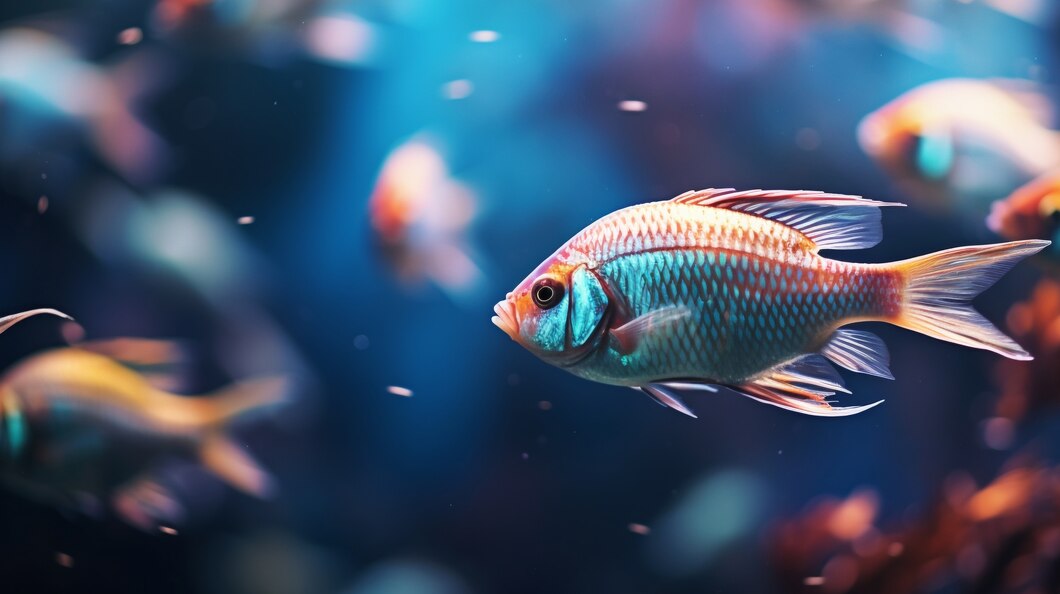
A Guide To Feeding your Tilapia Fish
Raising fish or fish farming can be quite a fun activity. It is somewhat satisfying and enjoyable.
Tilapia are wonderful fish to nurture since they eat a variety of foods. They are the most commonly cultivated fish on the planet and the second most common species raised in aquaculture. The name tilapia refers to multiple species of primarily freshwater fish that are members of the cichlid family.
Despite being native to Africa, wild tilapia fish have been introduced throughout the world and are now farmed in a lot of countries.
Because it doesn't mind being crowded, grows quickly, and prefers a cheap vegetarian diet, it is the perfect fish for farming. Juvenile tilapias are omnivores i.e they are opportunistic feeders who consume both plants and animals without specialisation. The majority of adult tilapia fish are herbivores.
Tilapia fish can be successfully farmed using the natural diet found in farm ponds and other bodies of water. Manures can be added to farm ponds to improve their nutritional content. Detrital material is introduced by organic fertilisers, which also encourage the growth of plankton and algae. Tilapia fish can eat these elements, which provide nutrients for their growth.
Under pond conditions, tilapia fish can be further separated into species that eat primarily water plants and species that eat primarily smaller plants. However, due to their very adaptable feeding habits, practically any sort of food offered will be consumed. They eat a lot of the dead stuff that they find at the bottom of the pond. Manure and synthetic fertilisers are used to fertilise tilapia ponds to improve the overall amount of fish produced there.
Tilapia fish can be raised in ponds using a variety of diets. They typically rely on the pond's natural food supply, which is fueled by the use of manure and artificial fertiliser. The remaining food can be added to this natural meal as a supplement.
Tilapia fish can be fed a variety of foods, including rice bran, fruit, cottonseed, peanut, and coffee pulp, as well as plant materials like leaves, cassava, sweet potatoes, cane, maize, and papaya.
Natural meals must be supplemented or replaced with designed diets while rearing tilapia in tanks. Smaller particles are necessary for newly born fish. They can be fed powder that has been specially prepared to fulfil their nutritional needs during this critical growth stage. To encourage growth, they might be given larger, specially prepared diets with digestible proteins and lipids.
Tilapia fish can be fed pelleted diets containing essential nutrients such as proteins, lipids, minerals, and vitamins as they get bigger. A steady diet is beneficial for tank-raised tilapia fish.
Tilapia can be fed prepared and compounded feeds in dry, wet, and moist forms. They can be fed compounded dried feeds in the form of powder, pellets, or crumbles. Popular pellets may vary in size and form according to tilapia's age.
Typically, there are two types of tilapia compound feed.
- Pelleted food
- Extruded food
Fish feeds are commonly referred to as "fingerling feed," "adult fish feed," etc. since they are used at various stages of growth. Generally speaking, the cost of extruded feed is higher than the cost of pelleted feed, but extruded feed has a higher breeding efficiency than pelleted food.
Commercial fish food pellets are produced using feeds that have been extruded or pressure-pelletized. Although both floating and sinking pellets can provide adequate development, certain species choose floating while others prefer sinking. For tilapia fish, which feed on the water's surface layers, floating fish feed pellets are ideal.
Fish Feed Formulation for Tilapia Fish
- To maintain production, low-cost tilapia fish feed made from readily available local components needs to be nutritionally equivalent to high-quality commercial tilapia feed.
- Fish feed preparation is labour-intensive on small-scale farms, and the quality of the feed is affected by the lack of certain amino acids in some of the ingredients.
- In general, floating pellets are preferred since they stay on the surface until eaten. Pellets that sink could easily be lost in the mud at the pond's bottom.
- Tilapia fish are plant eaters that typically eat algae which they filter from the water with the help of microscopic combs inside their gills or duckweed that they discover on the water's surface. To increase the amount of protein in commercial fish feed, duckweed can be added.
Summary
Hope this blog was helpful in guiding you about tilapia fishes, and the food they eat and solved your doubts. Tilapia fishes are easy to take care of and require minimal effort and attention. At Intan, we are here to provide you with premium fish feed. Our feed is tailored to meet the specific needs of each species. We truly believe every feed can spark positive change and create a future promoting quality, resilience, and well-being. We aim to serve the needs of hobbyists and breeders for the best quality of each species' unique requirements. To know more about us, check out our Instagram page.
